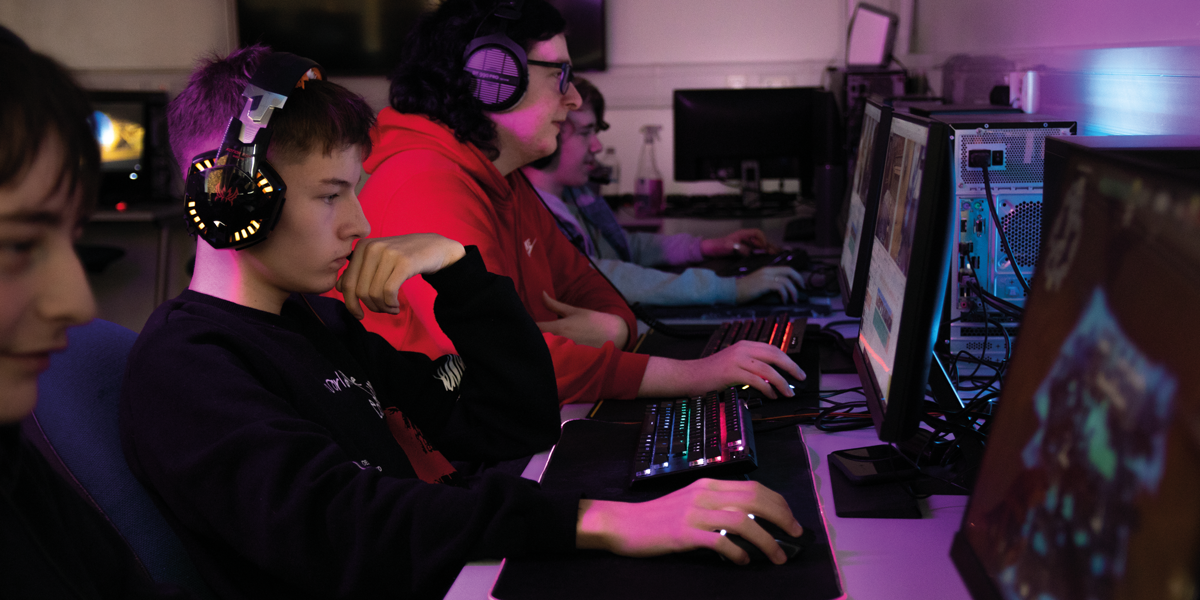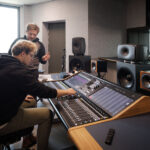Learn from Home

Posted on Apr 12, 2023 by FEED Staff
Remote learning in the educational realm transformed beyond all recognition during the pandemic. Now, the market is abuzz with new technology
Words by Nick Easen
Pictures by Blended Learning Consortium
Video conferencing and remote teaching tools are providing a more flexible approach to education all across the globe. Logging in to a university lecture remotely or watching a prerecorded class is now often more common than attending in-person. Taking the UK as an example, schools across Britain have seamlessly deployed tablets to help pupils catch up on basic maths and English. More than ever, resources are plentiful and suppliers are copious.
The market for hybrid and remote-learning solutions is a flourishing one. More than 1000 companies are active in the educational-technology (edtech) market in England alone, employing up to 49,000 people and generating approximately £4 billion in value for the economy. The Covid-19 pandemic evidently came packaged with a clear and direct message: access to blended and digital learning tools is a necessity, and any institutions lacking such technology are antithetical to educational attainment.
“Schools and further educational establishments have been through a time of twofold change. It’s been a powerful period of transformation. We still need massive investment in digital infrastructure. Yet many school improvement journeys over the last few years have been powered by edtech. It’s been remarkable,” explains Ty Goddard, the executive chair of Edtech UK.
“Hybrid and remote education tools have extended learning time. They better prepare young people, boosting digital literacy. They also allow teachers to conduct rapid tests on pupils’ abilities. Tools and content can prioritise and save educators time – they’re a game changer.”
Proliferation and sophistication
Technologies deployed by colleges, schools and universities are becoming increasingly advanced. Affordable, high-definition cameras can show teachers, classrooms, laptop and whiteboard views to remote students via Zoom. Meanwhile, broadcast-level microphones can capture instructor and student voices with crisp quality. In recent times, the use of cloud and software resources has proliferated in the educational setting.
“We use Moodle as our main virtual-learning environment, where students find all of their resources in one place. We then use Microsoft Teams to support online collaboration. Padlet is widely deployed to generate discussion, Wakelet is used for information curation and research, while art and design students sign on to Adobe Creative Cloud. And we use Badgr as a digital badge system to acknowledge achievements,” states Amy Hollier – who heads up the UK’s Blended Learning Consortium.
“To create our own content, we use Articulate Storyline, Rise, H5P and Canva. By using tech tools in their everyday tasks, students don’t realise just how much they are learning from a digital perspective as they work through the material. Our students have said they prefer asynchronous activities online to give them time to complete work at their own pace.”
The challenge with hybrid and remote working, aside from student connectivity and access to devices, is the need for a new approach to education. Remote learning has some visible downsides, however, with the shared opinion across schools that engagement levels tend to drop in the virtual setting. Therefore, regular assessments are enforced, to ensure students are absorbing lessons effectively. Training and support for staff and students are vital components to ensure this new educational world continues growing organically.
“There are other issues. Some online learning resources aren’t designed to be viewed on a mobile device and therefore give a poorer user experience. Learners might not have the data available and so can’t afford to have lengthy synchronous sessions online.
“These challenges must be considered when planning a hybrid learning experience,” details Hollier.
New tech, new learning
In the future, emerging tech will offer new dimensions to the hybrid educational experience. For instance, scenario-based learning can take place using virtual and augmented reality, exposing learners to real-life experiences in a controlled environment. This could be applied to deal with a road traffic accident, or used for healthcare students trying to understand difficult care scenarios. We’ve already seen it at play in some more advanced academic institutions.
“Hybrid learning can enable students with other commitments to engage in learning at a time that suits them with more flexibility. For example, those with work, caring or parental responsibilities can regularly access learning remotely where traditional, timetabled, face-to-face lessons may have previously been difficult to attend,” explains Hollier, who is also director of blended and online learning at Heart of Worcestershire College.
“Certainly, the future is bright with many possibilities.”
Originally published in the spring issue of FEED.
Education & E-leaning archives











